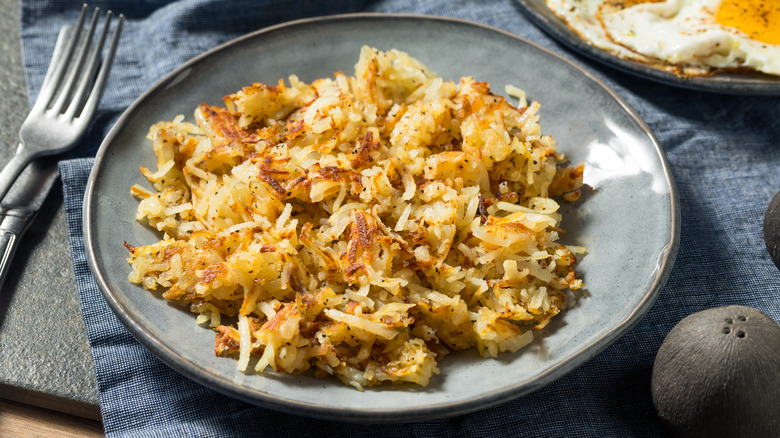Frozen Vs. Fresh Hash Brown Potatoes: What's The Difference?
Hash browns make a great base layer for a breakfast hash, topped with eggs, veggies, and meat, or just on their own, crisped up as a savory side dish. The dish first appeared around the late 1880s — coined "hashed brown potatoes" by cookbook author Maria Parloa — and they had become a popular breakfast dish in New York restaurants and hotels by the 1890s, according to the Idaho Potato Commission. Now, hash browns and patties are served in diners all across the country.
We tend to think of fresh, homemade food as being much healthier for us than frozen foods. And, while this is generally the case, sometimes frozen food is just more convenient. In the case of hash browns, the nutritional differences between fresh and frozen may be minimal enough that you can enjoy the convenience of frozen potatoes without worrying about your health.
The grate debate: Is fresh worth it?
The nutritional value between fresh and frozen hash browns is comparable, according to The Takeout. They note that frozen hash browns typically have just three ingredients: potatoes, dextrose, and sodium acid pyrophosphate. Dextrose prevents the potatoes from browning, while the sodium acid pyrophosphate keeps their color consistent while frozen — which Ore-Ida even explains right on the packaging.
When making your own hash browns, you will need to spend time washing and peeling the potatoes before shredding them with a cheese grater. Then, to crisp them up, fry them in oil before serving. Though fresh hash browns are undeniably delicious, the amount of time they take isn't exactly ideal for a busy morning. And, although this method does cut down on the added sodium, you might gain it back by adding salt, ketchup, or cheese on top once the hash browns have cooked.
Pre-packaged frozen hashbrowns take the work out of peeling and prepping potatoes early in the morning. If you don't mind a little extra sodium, you can enjoy the convenience of a quicker breakfast in the morning.

